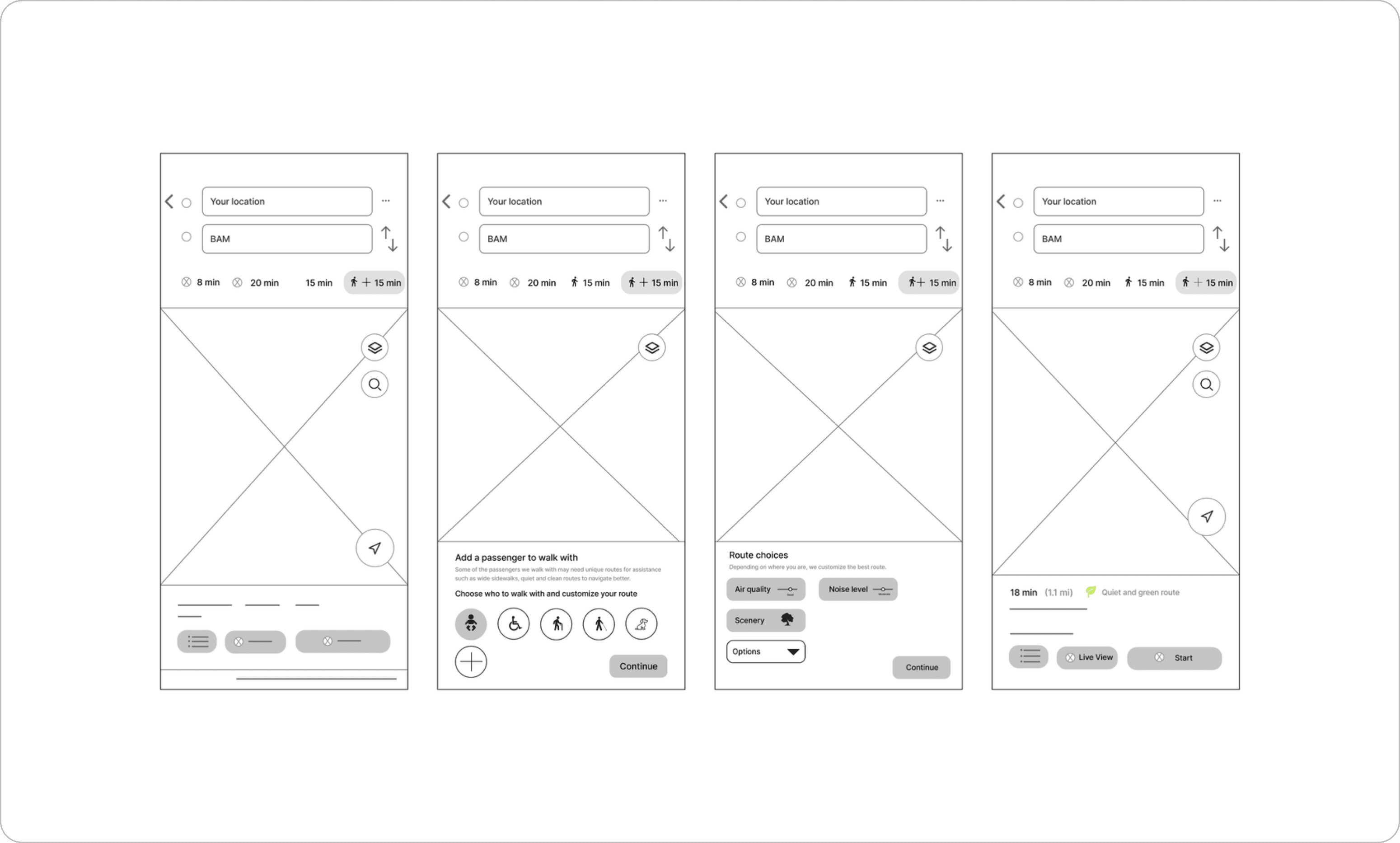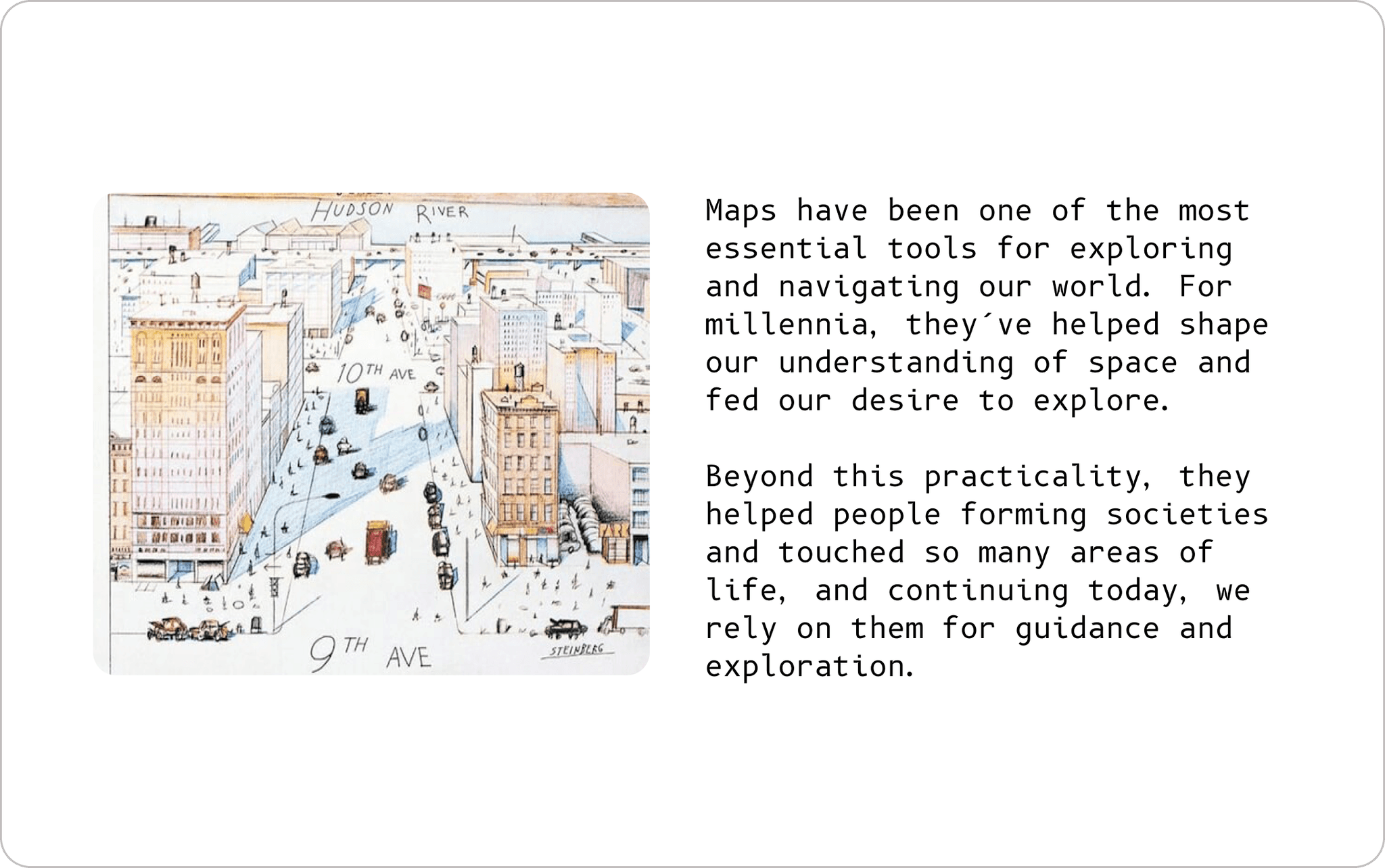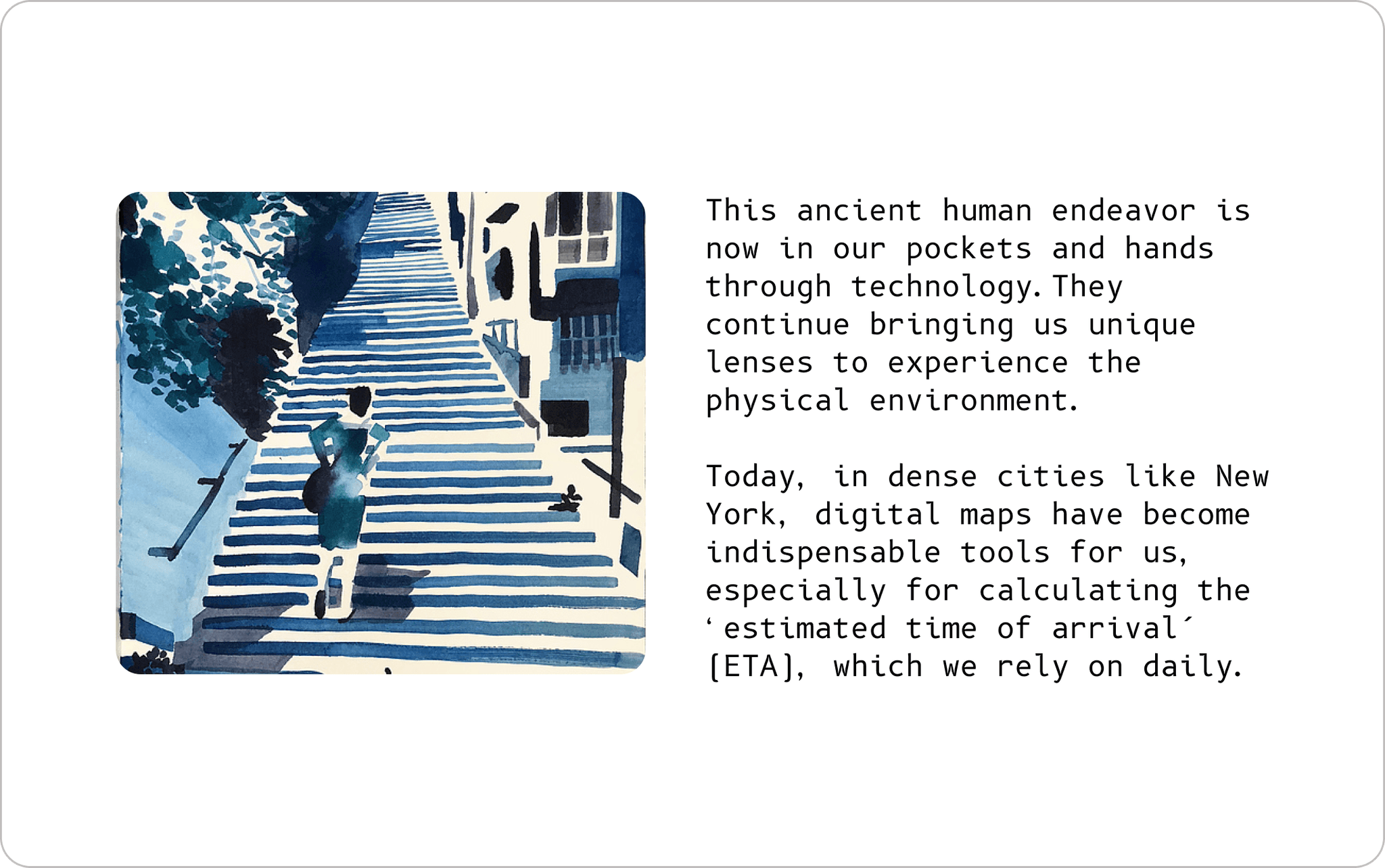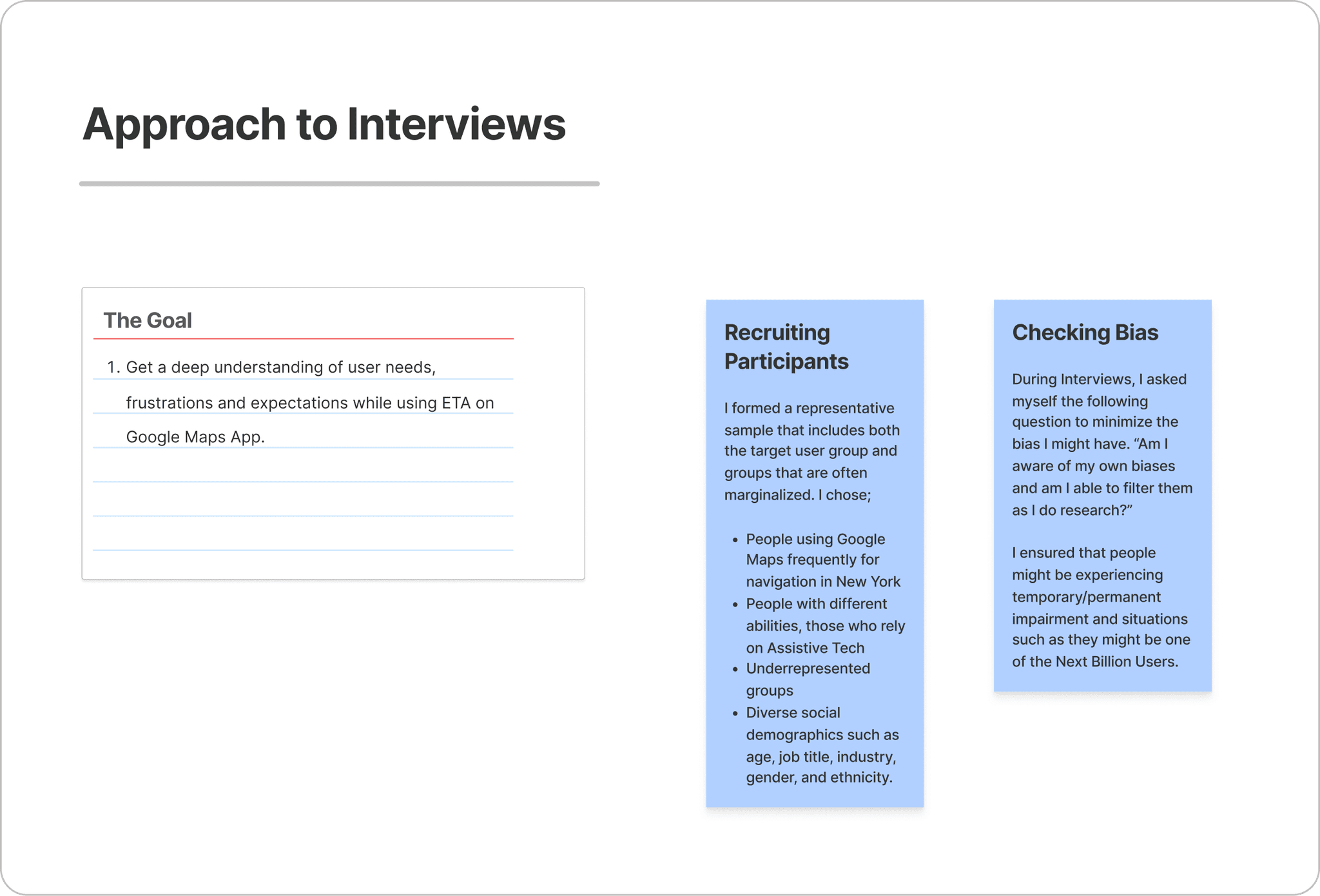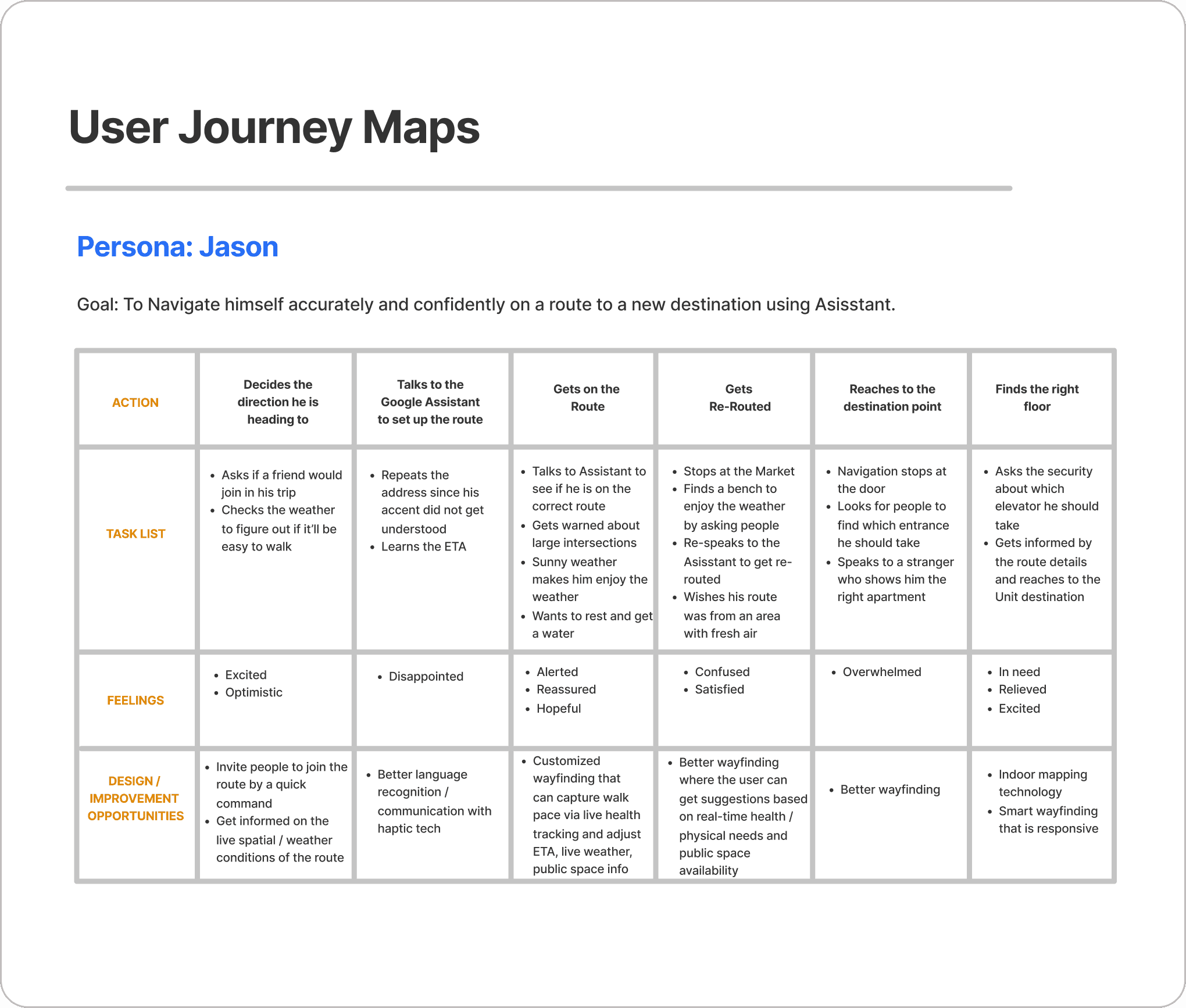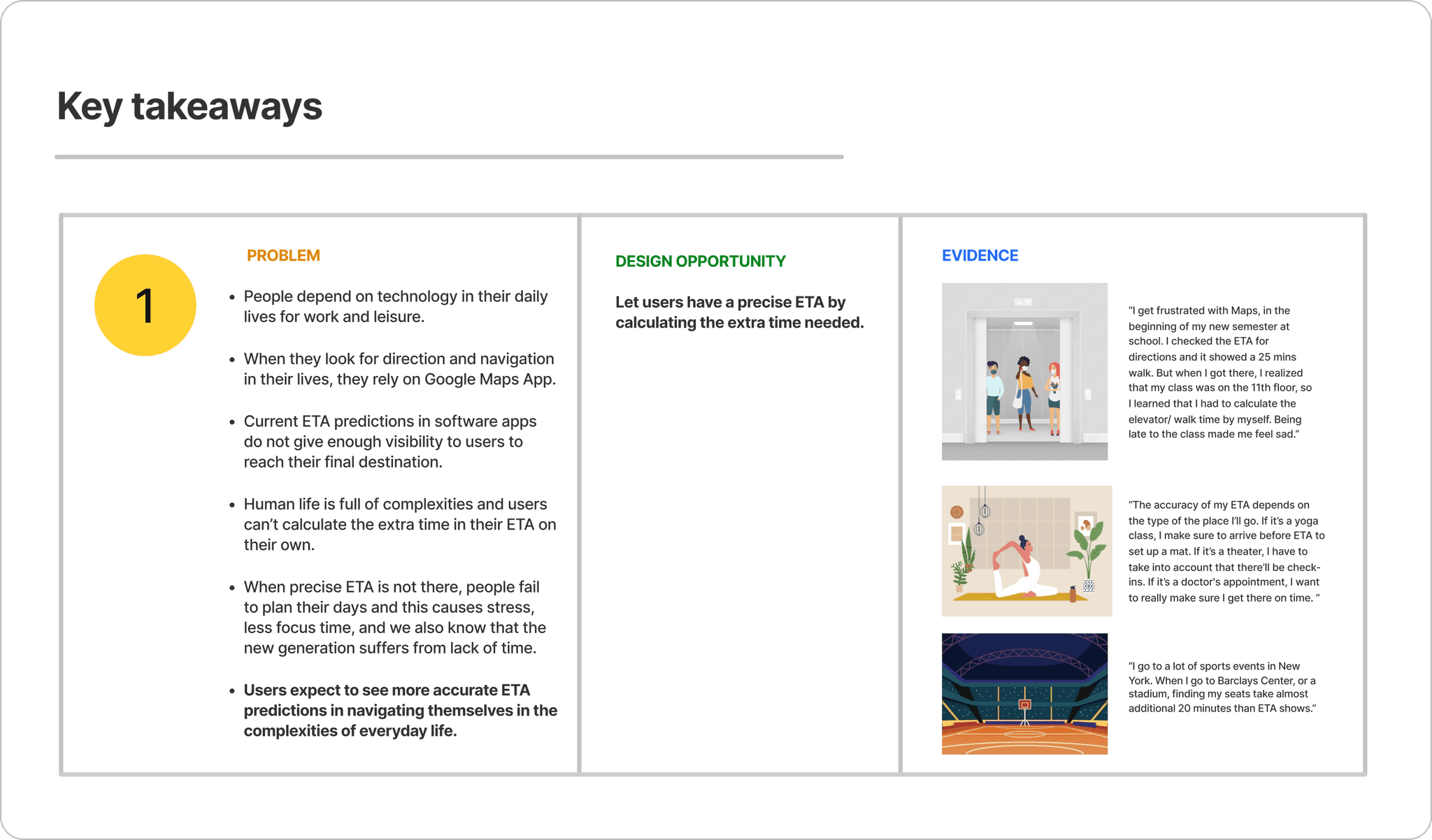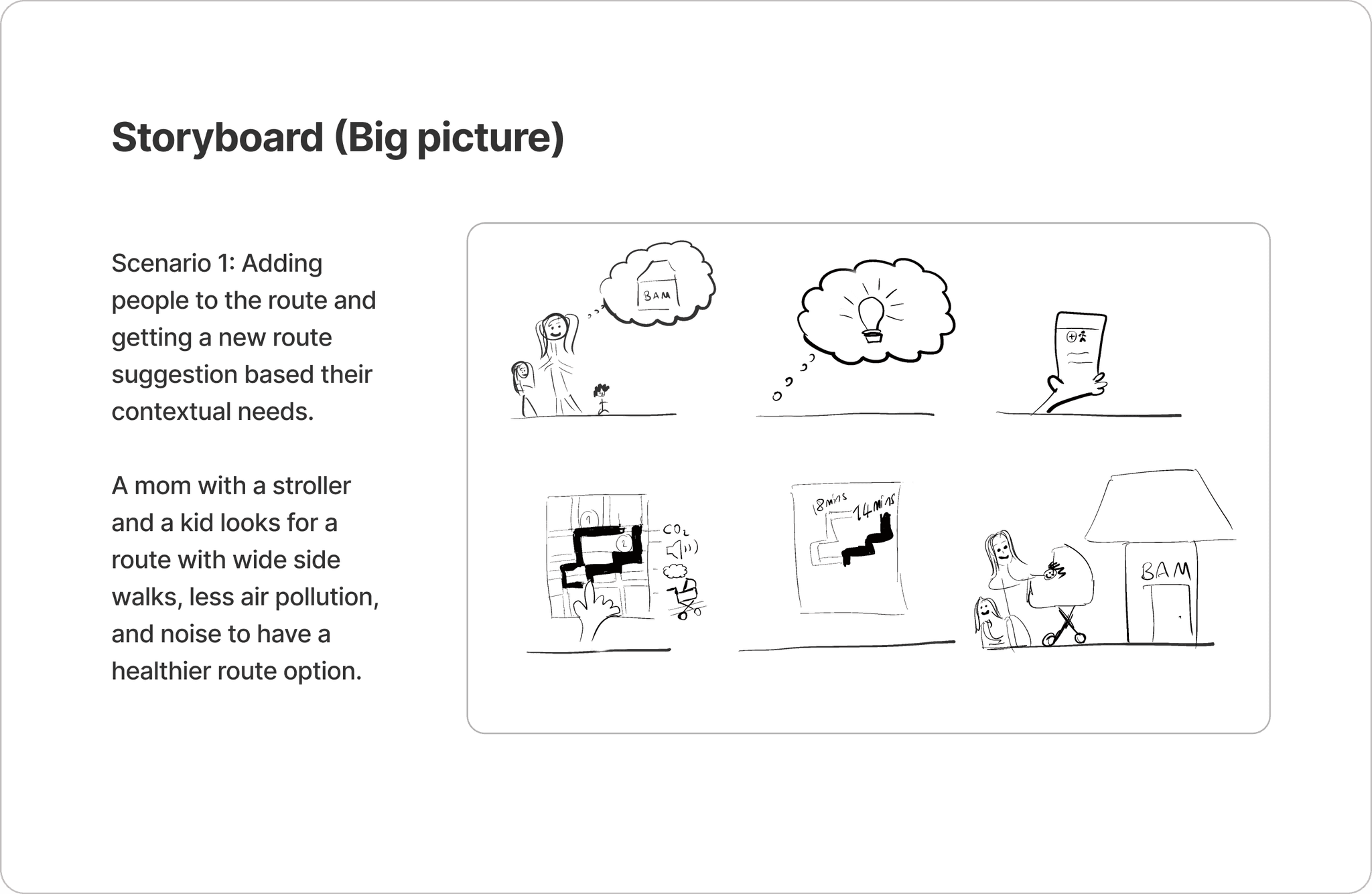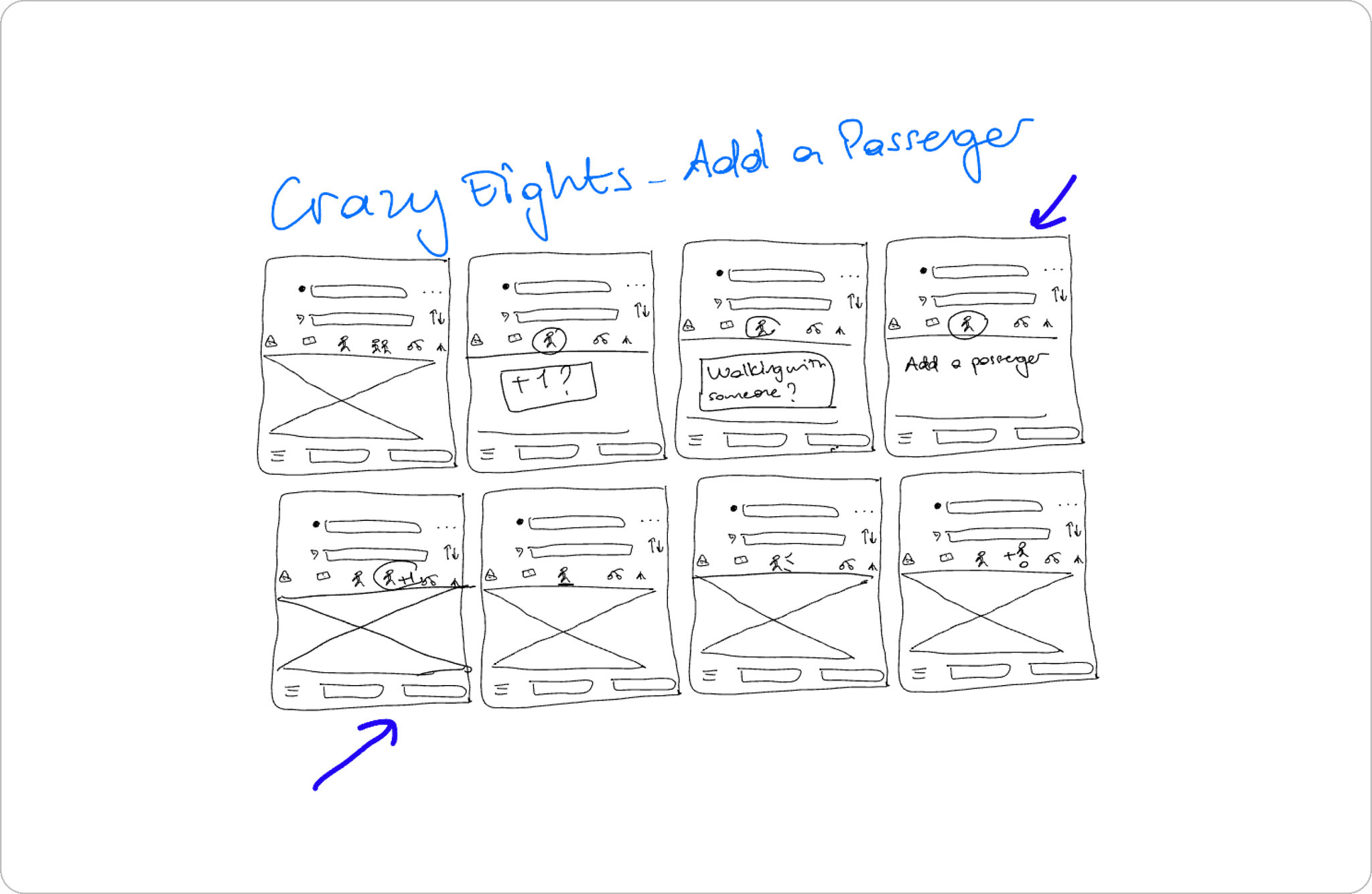Self-driven Project: Improving Inclusive Wayfinding on Google Maps
YEAR
2022
DURATION
6 Months
ROLE
UX Designer
PRODUCT
Concept Design
SKILLS
User Interviews, User Flows, Journey Maps, Prototyping, Testing
01 Hypothesis
I was very curious to validate the problem I had observed to determine if it was a real user problem. My hypothesis was that people need more accurate ETA predictions that adapt to their changing contexts, particularly for those with temporary or contextual disabilities. A parent with a stroller, a person carrying heavy bags, a student rushing to the classroom on a road disrupted by construction, I thought should not receive the same ETA as I were.
I hypothesized that providing wayfinding options that consider walking speed and personal preferences could improve navigation by offering routes beyond mere efficiency. As my technology philosophy, I believe technology one day reflect serendipity and real life conditions greatly.
02 Methodology
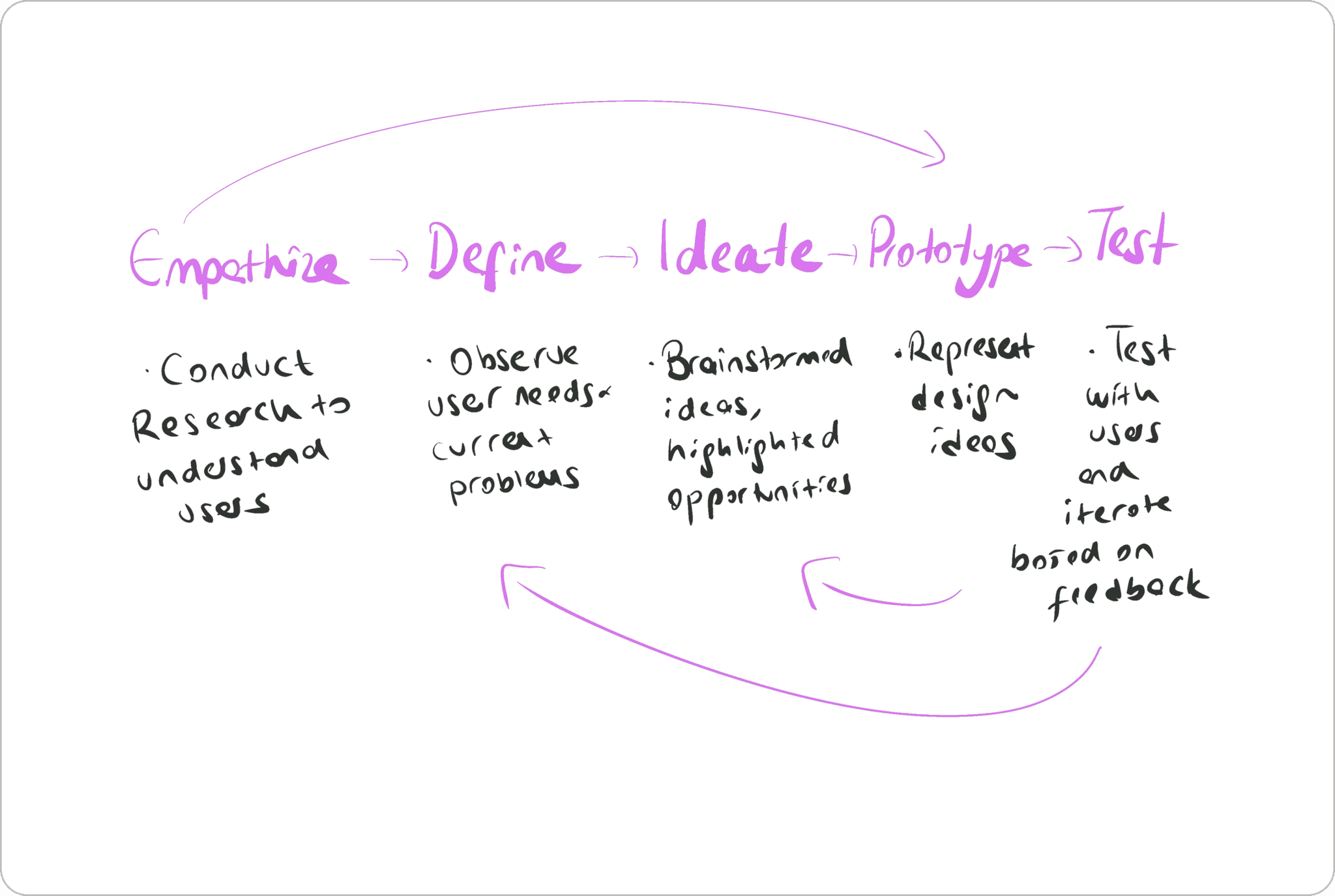

03 Empathize & Understand
I began conducting user research and benchmarking analysis to understand the problem space.
I used methodologies like 'Empathy Maps' while synthesizing what I heard from the user interviews, to better understand the feelings, needs, goals, and pain points.






Research insights helped me to develop personas to represent the diverse needs users face in Maps. These personas, like Jason and Lara, helped highlight the need for more contextual, adaptive solutions that consider real-life conditions.
Interviews showed that people depend heavily on ETA predictions in their daily lives. Current predictions lack the precision needed to help users plan their routes effectively, especially in the context of real-life complexities like delays and various personal schedules.
04 Define
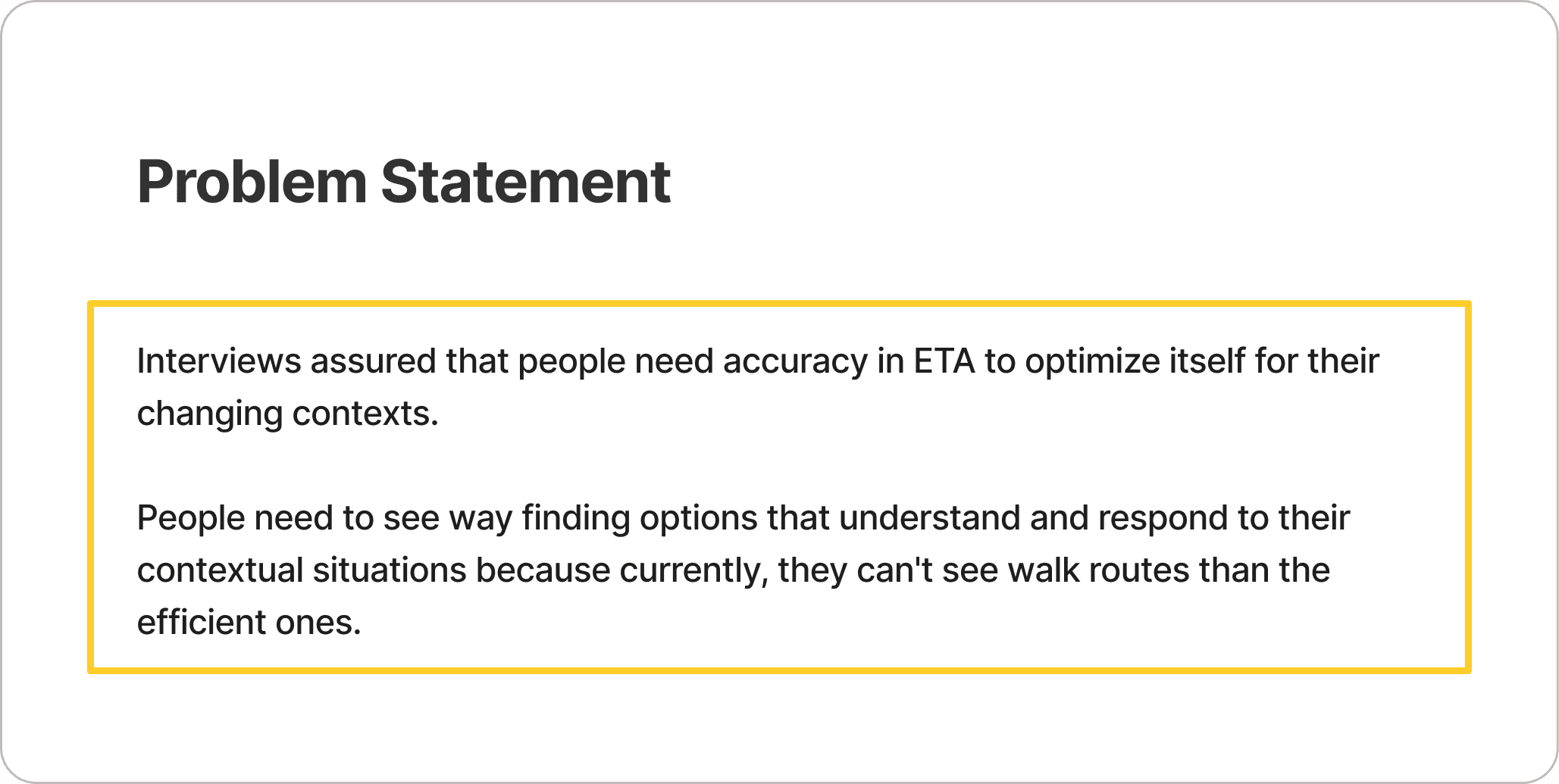


05 Ideate
I began exploring an idea that emerged from ideation sessions with stakeholders I collaborated with, including feedback from ex-Google researchers and industry friends: the "adding more people to a route" feature. With advances in AI, this feature could scale further - and could offer ETAs based on real-time conditions, even factoring in personal health.

The goal was to dynamically adapt routes based on the unique context of each user and their companions. I sketched some layout options.
06 Testings
I conducted a guerrilla testing approach due to limited time for my early works. I tested the layouts with people I encountered at a coffee shops in Williamsburg, or co-working space where I was working in Chelsea.
07 Takeaways from Testing
Based on my initial tests, I explored the idea of using a long press to 'add passengers to the walk with', such as a baby, stroller, cane, or dog. During the tests, participants shared that they didn’t see adding a person as an everyday use case. They felt restricted by having only five preset options and expressed a desire for more freedom in sharing contextual factors beyond just people. So, I went back to the ideation phase one more time.
